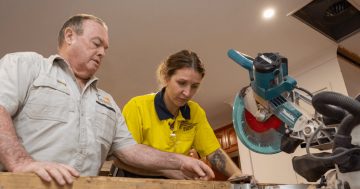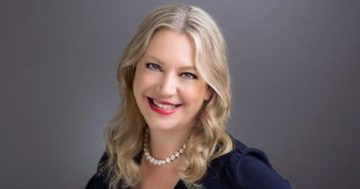Tina Casey* says when it comes to hiring women in non-traditional fields, it pays to think outside the box.

Photo: Christian Fregnan
When it comes to hiring women in non-traditional fields, the global recycling and hazardous waste company Republic Services has made its mark.
Let’s start with its operations: The solid waste collection company now employs 65 female drivers out of its office in Baton Rouge, Louisiana.
That’s 65 more female drivers than the office had on its roster 15 years ago.
An opportunity within a crisis
As with many instances of progress, Republic’s opportunity to change the gender game arose from a crisis.
About 15 years ago, Sharon Mann, now the general manager at Republic, was faced with a driver shortage.
She saw the need for a radical change in the company’s recruiting strategy, and she decided that women drivers could be part of the solution.
The experiment succeeded beyond expectations — and it provides a case study for organisations seeking to diversify their teams, grow their workforce and improve performance, too.
“A great leader is only successful if they have successful people working for them,” Mann says.
“It’s about choosing the right talent to be on your team and making sure they see the vision that you see.”
Inclusive leadership starts with culture
Though Mann emphasises that basic leadership qualities are universal and independent of gender identity, her own career path at Republic reinforced her confidence in women drivers.
The corporate culture has also continuously supported Mann’s confidence that Republic would be a good fit for female employees.
Forming partnerships for strategic recruiting
Mann recognised that recruiting women drivers was an outside-of-the-box approach to the prevailing hiring strategy.
The company had no rule against female drivers, but it did not have a welcome mat, either.
“I don’t think that women have a hard time getting into our industry,” Mann explains.
“[The challenge is] getting women to be attracted to our industry.”
“Women were not aware of our industry, or what the industry could offer.”
Forming partnerships for strategic recruiting
To develop a recruiting strategy for women drivers, Mann reached out to the City Council and local women’s services groups.
A key element in the strategy was to focus on the existing female talent pool among city and school bus drivers.
Extra effort pays off
Bus driving skills only cover part of the driver requirements at Republic — drivers also need to operate equipment, and that meant investing more time and effort in training.
Some of Mann’s supervisors were sceptical at first, but she encouraged them to allow for another week or two over the conventional two-week training period.
The results were spectacular.
“It ended up being very, very successful for us,” Mann recounts.
“Even though they did take a little bit longer to train, [new women hires from outside the industry] are some of the best employees we have, because they take care of their equipment, their trucks are immaculate, the customers absolutely love them, and they are very familiar with the neighbourhoods that they’re servicing.”
“It was a win-win for us.”
Spreading the corporate culture message by word of mouth
If communicating corporate culture to new communities is the key to Republic’s success in recruiting women, then it is the gift that keeps on giving.
“Right now, I haven’t recruited a female driver probably in seven or eight years,” Mann said.
“The [drivers] that I have are the best recruiters.”
“They recruit for me.”
In addition to keeping the pool of drivers stocked, the word-of-mouth recruiting has also attracted more women throughout Mann’s operations, including two in supervisory roles, she said.
Leave nothing to chance
One important lesson drawn from Mann’s success is the need to train and inform male supervisors who have little or no experience working with women.
“That was a bigger challenge for me than anything; that is where everything just started flowing and we started seeing so many applicants come through, and other females were recruiting,” Mann said.
“The word was out on the street, and people were just bombarding us with applications.”
It was then that Mann realised she had to be proactive and make it clear to all supervisors that this demographic shift in Republic’s workforce was a positive trend and was here to stay.
Mann organised training sessions, brought in an outside expert for advice, and provided one-on-one feedback to supervisors.
“You have to be fully engaged with your team and be able to coach, mentor and train,” she says.
“If people want to work for you, they’re going to be successful — and if they’re successful, you’ll be successful.”
So, what is female leadership?
Breaking the gender barrier is not a simple matter of changing the rules, when there are no rules to begin with.
Mann’s perspective on what it takes for women to assume leadership roles is an echo of her recruiting strategy, in that it entwines corporate culture with personal life.
“There’s two things I believe: That you have to work really hard if you want something, and … if you’re not having fun doing what you do, then you need to do something different,” Mann says.
“You’ll have good and bad days, but you really have to enjoy doing what you’re doing.”
“And if you do, it will be very difficult for you not to be successful.”
As for leadership itself, Mann takes a universal perspective.
“Your people are the most important asset that you have,” she concludes.
“If your people really believe in what you believe in, and they want to work for you, they’re going to go above and beyond.”
“And I really feel strongly about my people. I really do.”
* Tina Casey is a tech and science writer. She tweets at @TinaMCasey.
This article first appeared at www.triplepundit.com.











